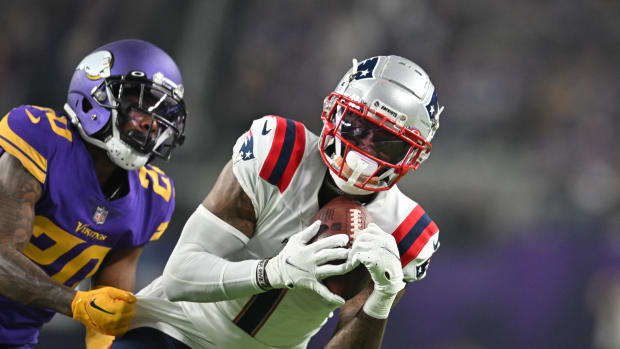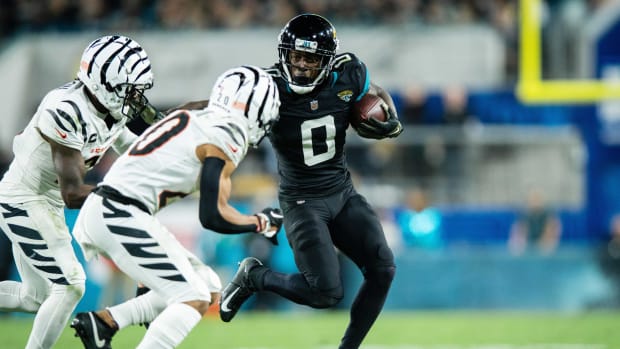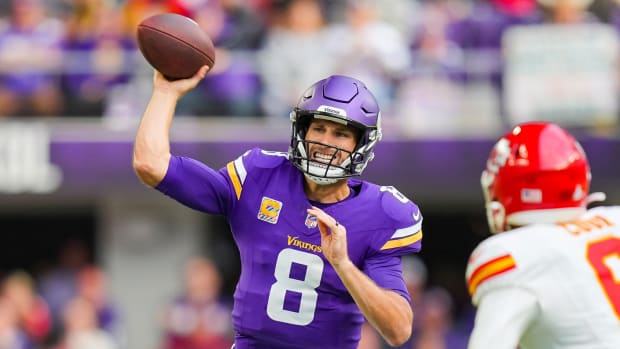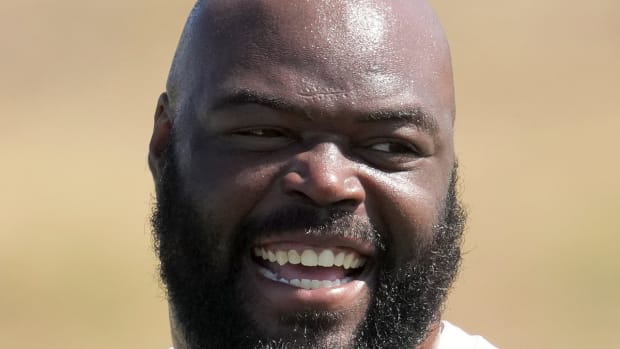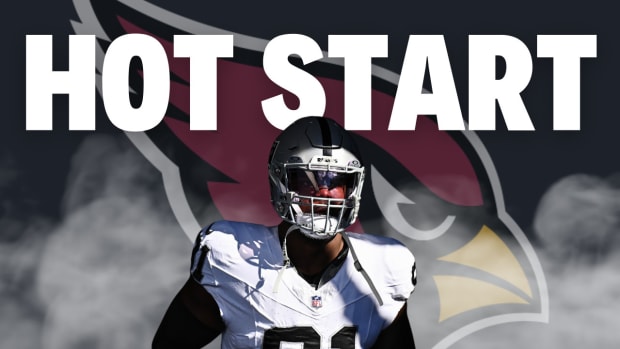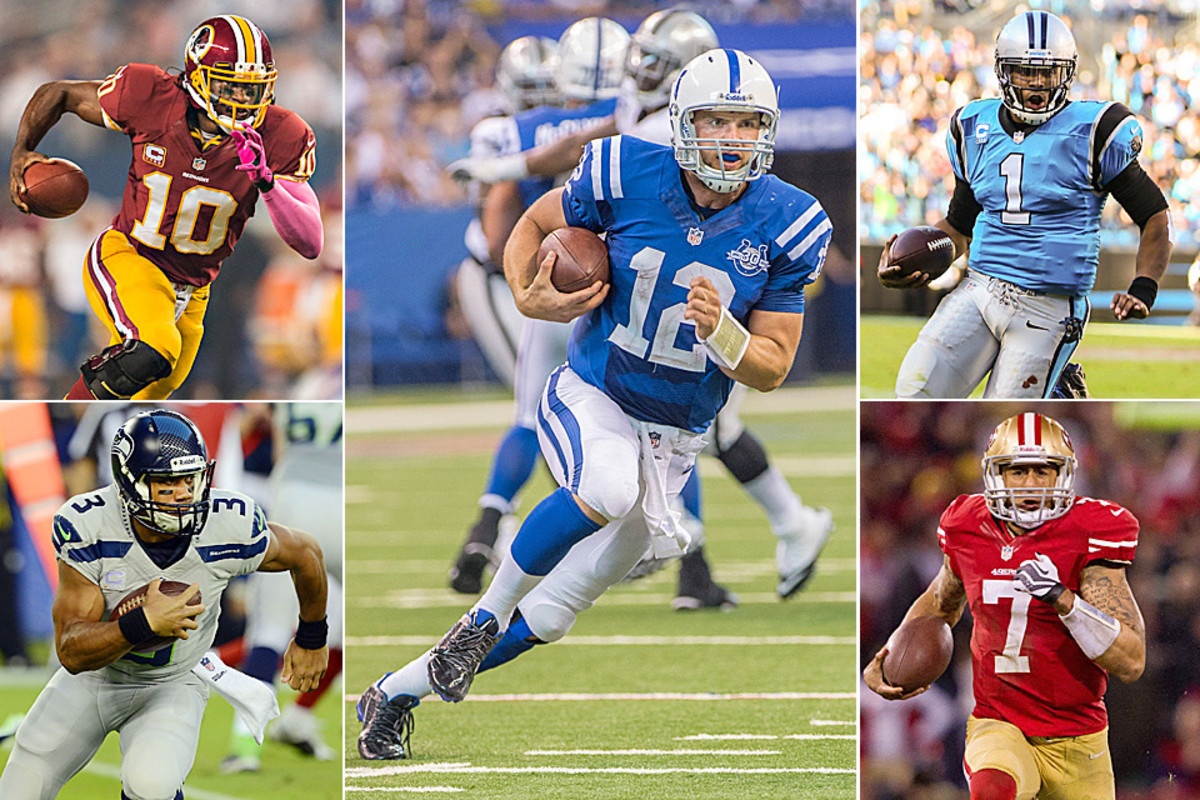
NFL’s Best Running Quarterback? The Answer May Surprise You
Two weeks ago I spent some time at NFL Films, a mecca for any football nerd. They have an incredible system for all their footage and audio, called Saber. Using Saber you can, among other things, view and sort All-22 coaches film by almost any factor imaginable. Want to see every Peyton Manning pass on 2nd-and-8 since 2005? You can! How about every Patrick Willis third-quarter tackle? Of course! Or every incompletion targeted for Darrius Heyward-Bey? You bet! (If you have a month to spend, anyway.)
I took the opportunity to break down every run by Cam Newton, Russell Wilson, Colin Kaepernick, Robert Griffin III and Andrew Luck from the 2013 regular season. Each player, save for Luck, had about 100 rushing attempts. After watching them all in a row, you start to notice patterns. I charted those patterns, focusing on (a) how successful each player’s scrambles and designed runs were, and (b) whether the scrambles stemmed from good or bad decisions.
So often, running quarterbacks run because they can’t recognize where to throw. I’m not talking about receivers being covered or the defense befuddling a passer; I’m talking about a QB dropping back and failing to execute within the structure of a well-designed play. Sacks often stem from this, too, which is why I also charted them in a separate study.
Football is not baseball; no statistical formula can portray exactly what is happening on the field. I would have loved to include incomplete passes in my study because, like scrambles and sacks, they often stem from undeveloped decision-making and unrefined fundamentals. Unfortunately, with only five days available at NFL Films, and only 12 hours available in each of those days, there was not enough time to view every incompletion.
Nevertheless, the running plays and sacks revealed plenty. The conclusions: Newton, Wilson and Kaepernick are insanely talented athletes, Griffin was not himself last year and Luck is a comparable athlete to all of them and an overwhelmingly better quarterback.
Here are the specifics…
Sacks
Player | Sacks Taken | QB at Fault | Pct. QB at Fault |
Andrew Luck | 36 | 0 | 0.0% |
Cam Newton | 47 | 9 | 19.1% |
Colin Kaepernick | 37 | 8 | 21.6% |
Robert Griffin III | 38 | 10 | 26.3% |
Russell Wilson | 48 | 15 | 31.3% |
That’s right: Luck was not the primary culpable offender for a single sack he took. The extremity of that statistic—ZERO!—is surprising, but the gist of it is not. Quarterbacks who keep their eyes downfield and move in the pocket with near-perfect mechanics don’t create their own sacks.
How other quarterback sacks were faulted:
Player | Sacks | Coverage Sack | Blockers | Protection Concept | Quarterback | Garbage |
Andrew Luck | 36 | 12 (33.3%) | 13 (36.1%) | 11 (30.6%) | 0 | 0 |
Cam Newton | 47 | 17 (36.2%) | 11 (23.4%) | 9 (19.1%) | 9 (19.1%) | 1 (2.1%) |
Colin Kaepernick | 39 | 12 (30.8%) | 7 (17.9%) | 10 (25.6%) | 8 (21.6%) | 0 |
Robert Griffin III | 38 | 9 (23.7%) | 9 (23.7%) | 10 (26.3%) | 10 (26.3%) | 0 |
Russell Wilson | 48 | 8 (16.7%) | 18 (37.5%) | 7 (14.6%) | 15 (31.3%) | 0 |
A note on Wilson: All but one of the sacks that were a blocker's fault came against a simple four-man rush.
Also worth noting: Some of the “protection concept” sacks—and, to a lesser degree, some of the coverage sacks—could be on the quarterback, depending on what his play-calling and protection-setting responsibilities are. But without being in the team meetings, we have no way of knowing that.
Scrambling
A “correct decision” scramble was any scramble caused by pressure or no receivers getting open. An “incorrect decision” scramble was when the quarterback blatantly abandoned a play design that worked. A “successful” scramble was something like, say, a first-down run that gained four-plus yards, or a third-down run that moved the chains.
Player | Scrambles | Good Decision | Pct. Good Decision | Successful | Pct. Successful |
Andrew Luck | 44 | 39 | 88.6% | 33 | 75.0% |
Colin Kaepernick | 55 | 41 | 74.5% | 34 | 61.8% |
Russell Wilson | 55 | 40 | 72.7% | 33 | 60.0% |
Robert Griffin III | 34 | 22 | 64.7% | 16 | 47.1% |
Cam Newton | 41 | 25 | 61.0% | 30 | 73.2% |
Just as with sacks, Luck graded out the best.
Some other highlights:
- Newton moved the chains 17 times by scrambling on third down (21 attempts). And he was 8-for-8 on QB sneaks.
- Wilson was 4-for-15 moving the chains when scrambling on third down, and just 1-for-6 on QB sneaks.
- 18 of Wilson’s “rushing attempts” for the season were QB kneel-downs. Take those out and his yards per run goes from 5.6 to 7.1.
- Also, 18 of Luck’s “rushing attempts” were kneel-downs. Take those out and his yards per run goes from 6.0 to 8.8. (Luck, however, attempted just 45 runs to Wilson’s 78.)
- Of Newton’s 16 “incorrect decision” scrambles, 13 still produced a successful outcome. In fact, several of his longest runs on the year came off incorrect decisions.
- Kaepernick was clearly the most dangerous scrambler in terms of speed and agility, though only 9 of his 22 third-down scrambles were successful.
- Griffin had the worst scrambling numbers, but he had (by a narrow margin) the best success rate on designed runs.
Designed Runs
Here’s the breakdown on success of designed runs:
Player | Designed Runs | Successful | Pct. Success on Designed Runs |
Robert Griffin III | 42 | 25 | 59.5% |
Cam Newton | 59 | 33 | 55.9% |
Russell Wilson | 27 | 14 | 51.8% |
Colin Kaepernick | 37 | 19 | 51.3% |
Andrew Luck | 2 | 0 | 0.0% |
Unquantifiable things that stood out:
- Newton is clearly a half-field reader. He also did not slide at all, though he managed to avoid any big hits. He gives himself up in the name of safety; his style is just to fall forward and essentially tackle himself.
- Wilson is another half-field reader, though his scrambles are, by indirect design, a major facet of Seattle’s offense. Seahawks coaches seem to instruct Wilson to run early in the down if that’s what he’s comfortable with. That changed the definition of some of his correct/incorrect scrambles.
- Kaepernick does not read the defense before the snap. You can tell because he shows no understanding of this basic quarterbacking concept: When one receiver is covered, it often means another receiver is not. There’s no awareness of route combinations.
- Griffin takes far too many punishing hits, especially at the end of runs in mildly critical situations (like, say, a 3rd-and-6 early in the first half). He’s been taught to protect himself, but the execution is not natural.
- Luck was impressive even on a lot of negative plays. He always tried to keep plays alive, running extremely late in the down and rarely compromising his physical readiness to throw.
The takeaway: About one out of four times, a young running quarterback will make a poor decision to scramble or do something to get himself sacked. That is, unless he’s Andrew Luck, who is basically a 10-year veteran in his approach to running with the ball (and treated as such; notice the Colts did not jeopardize his safety with designed run calls). In terms of efficiency, which is crucial to quarterbacking, Luck was clearly the best of this bunch—and that’s just in the running department. Based on what his decision-making revealed in this instance, my guess is he’d be even further ahead of Griffin, Kaepernick, Newton and Wilson if we conducted a passing-game analysis. Right now, these running quarterbacks are dominant athletes—which can be enough if they have a strong supporting cast. But with a 15-percentage-point jump in their decision-making proficiency, they’d become dominant quarterbacks.

































